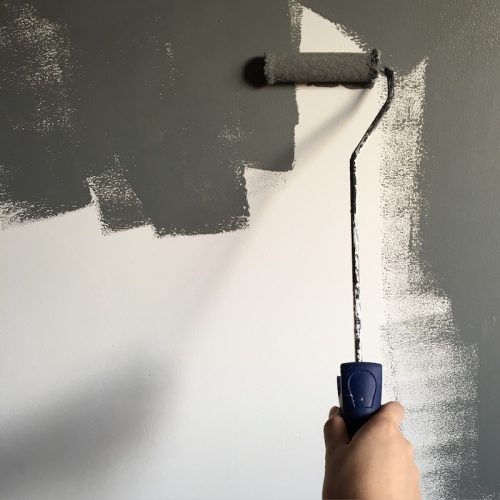Painting
Painting a commercial property involves several important steps to ensure a professional and long-lasting finish.
Here’s a guide to help you through the process:
1. Planning and Preparation
- Assess the Property: Inspect the building for any damage or areas that need repair before painting. Check for cracks, peeling paint, or mold.
- Choose the Right Paint: Select high-quality paint suitable for commercial properties. Consider factors such as durability, weather resistance, and color schemes that match your brand or desired aesthetic.
- Obtain Necessary Permits: Check local regulations to see if you need any permits for exterior painting, especially if your building is in a historic district or subject to other regulations.
2. Surface Preparation
- Clean the Surface: Remove dirt, grease, and mildew using a pressure washer or cleaning solutions. This step ensures that the paint adheres properly.
- Repair and Sanding: Fix any damages, fill cracks, and sand rough areas to create a smooth surface.
- Priming: Apply a high-quality primer to help the paint adhere better and last longer, especially if you’re making a significant color change or painting over a dark color.
3. Painting
- Choose the Right Time: Paint during favorable weather conditions to ensure the paint dries properly. Avoid painting during very hot, cold, or humid weather.
- Use Proper Techniques: Apply paint using appropriate tools such as brushes, rollers, or sprayers. Apply multiple thin coats rather than one thick coat for a more even and durable finish.
- Safety Measures: Ensure the safety of workers and property occupants. Use proper protective gear and safety equipment, and cordon off the work area to prevent accidents.
4. Final Touches and Clean-Up
- Inspect the Work: Once the paint is dry, inspect the property for any missed spots or imperfections and touch up as necessary.
- Clean Up: Remove all painting materials and dispose of any waste properly. Clean brushes, rollers, and other tools.
- Maintenance Plan: Establish a maintenance plan to keep the paint looking fresh and to address any issues that arise over time.
Tips for Success
- Hire Professionals: Consider hiring experienced commercial painting contractors who have the expertise and equipment for large-scale projects.
- Color Consultation: Work with a color consultant to choose the best colors that align with your brand and attract customers.
- Eco-Friendly Options: Look into environmentally friendly paint options that have low VOC (volatile organic compounds) to ensure a healthier environment.
By following these steps and tips, you can ensure that your commercial property looks professional and inviting, enhancing its appeal and potentially increasing its value.

